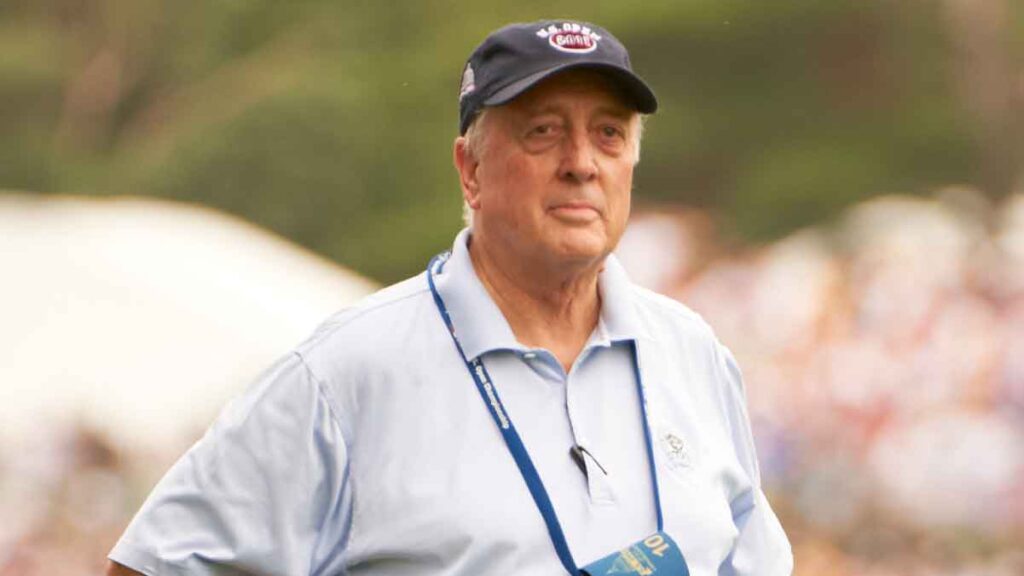The Evolution of Golf Course Design: Insights from Rees Jones
Golf course design has undergone significant transformations over the decades, trending from punitive layouts to more player-friendly experiences. While many architects now emphasize width and ground-game options, recognized designer Rees Jones offers a compelling counterpoint. His views reveal a complex landscape in modern golf course architecture that warrants a deeper exploration.
The Shift in Golf Course Design Philosophy
At its core, the evolution of golf course design reflects a shift in player expectations and preferences. In the past, architecture often emphasized challenging elements that could frustrate even the most skilled golfers. The common perception today is that designers have moved toward creating more accessible layouts, where penal features are minimized, and strategy takes center stage. Jones, however, asserts that many contemporary architects have adopted a style that, while appearing accommodating, is ultimately more penal than it seems.
Rees Jones: The Architect’s Legacy
Born into a legacy of golf architecture, Rees Jones carries the torch passed down from his father, Robert Trent Jones Sr. Known as the "Open Doctor," Robert Trent Jones Sr. famously revamped numerous U.S. Open venues, helping to define golf design during the mid-20th century. Rees has carried on this tradition, earning accolades for both restorations and original designs. His ability to combine innovation with tradition makes him a pivotal figure in modern golf course design.
A Closer Look at Modern Architectures
In a recent episode of the Destination Golf podcast, Jones elaborated on the contemporary trends he observes in golf course design. Although it may seem that wider fairways and softer strategies are more player-friendly, Jones argues that many current designs rely on strategic penalties that can frustrate golfers. Notably, he references the increasing use of sand-bracketed fairways, which frame hole designs but also serve to heighten the stakes for errant shots.
The 2025 Ryder Cup and the Role of Jones
Rees Jones is currently engaged in preparations for the 2025 Ryder Cup at Bethpage Black, one of the U.S.’s most iconic courses. This track, originally designed by A.W. Tillinghast in the 1930s, poses challenges that differ from the demands of newer layouts. While older designs like Bethpage Black require players to execute precise shots over long distances, contemporary courses may emphasize different forms of defense—often through strategic sand placements and water hazards.
Understanding the Modern Golf Experience
Jones notes that today’s golfer is often more averse to sand than ever before. This has led many architects to incorporate design features aimed at increasing the thrill of the game while simultaneously decreasing player satisfaction through punitive layouts. The balance between difficulty and enjoyment is a subject of heated debate among both players and designers, and it reflects broader trends in the game itself.
The Influence of Player Feedback on Design Choices
Player preferences significantly influence design paradigms. As golf has expanded its reach, architects must respond to a diverse audience with varying skill levels. The rise of recreational golfers, often dubbed "weekend warriors," means that architects must design courses that provide an enjoyable experience while still challenging more skilled players. This puts pressure on designers to find innovative ways to keep all players engaged.
The Tension Between Classic and Modern Concepts
Jones’ perspective raises questions about the dichotomy between classic and modern philosophies in golf course design. While some contemporary architects privilege playability, others remain committed to preserving traditional elements that foster a deep respect for the game. This tension serves as a critical focal point in the ongoing dialogue about what constitutes an ideal golf course.
Insights from the Golf Community
As Jones continues to participate in discussions about the trajectory of golf course design, his insights resonate with many in the golf community. He urges both players and designers to engage in honest conversations about course design, focusing on the balance between fun and challenge. His belief that modern layouts often still employ penal strategies encourages a reevaluation of what makes a golf course enjoyable.
Conclusion: The Future of Golf Course Architecture
The discourse surrounding golf course design is ever-changing, continuously shaped by player preferences, technological advancements, and evolving cultural values. As experts like Rees Jones remain at the forefront of the industry, the conversation will undoubtedly continue to evolve. Understanding these nuances helps us appreciate the complexity of golf course architecture and its impact on the game itself.
As Rees Jones reflects on his extensive career and the future of golf course design, one thing remains evident: the challenge lies not just in the layout but in striking a balance that respects both tradition and the modern golfer’s experience. To dive deeper into Jones’ thoughts and insights on course design, check out his full conversation on the Destination Golf podcast.


